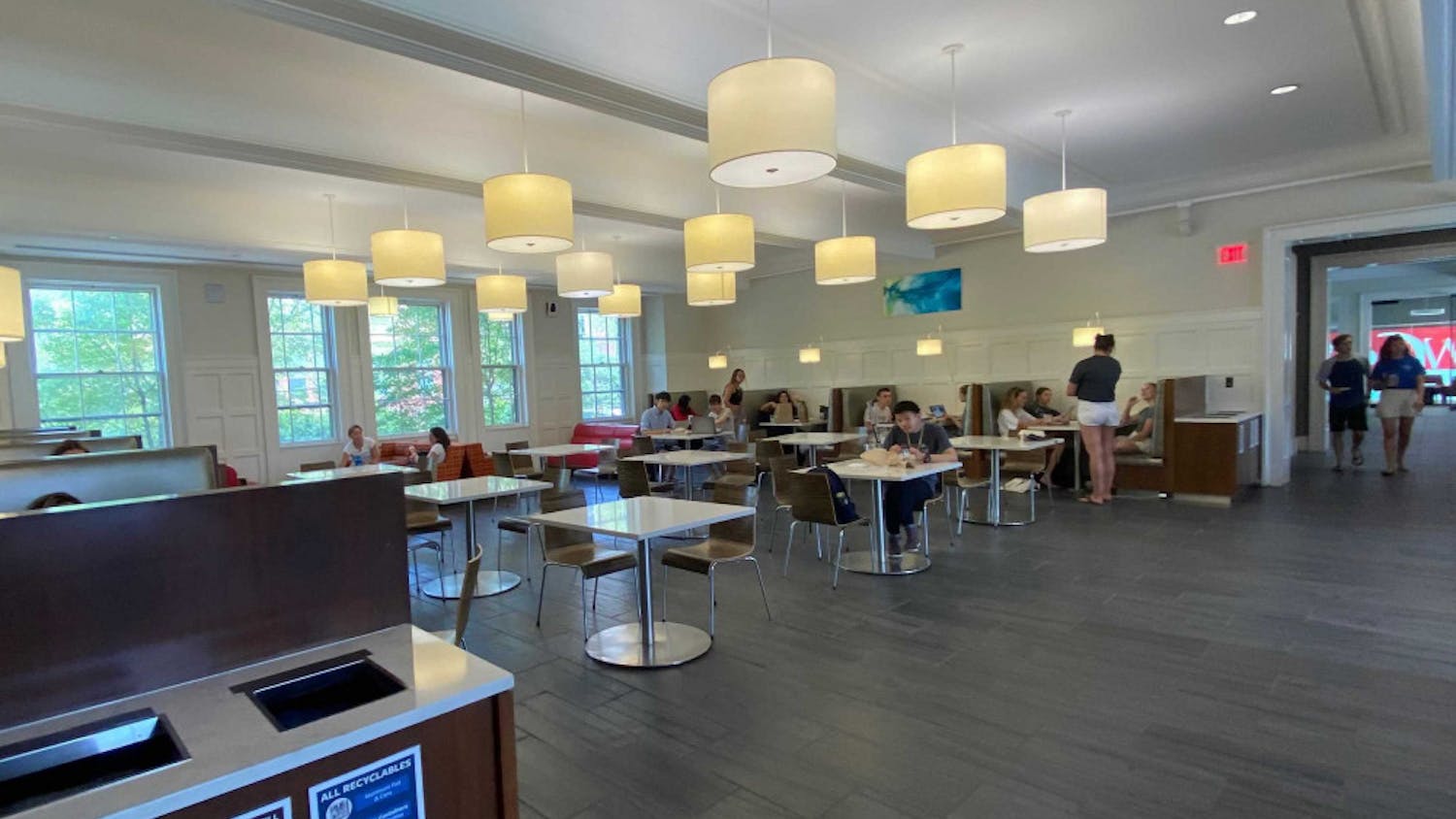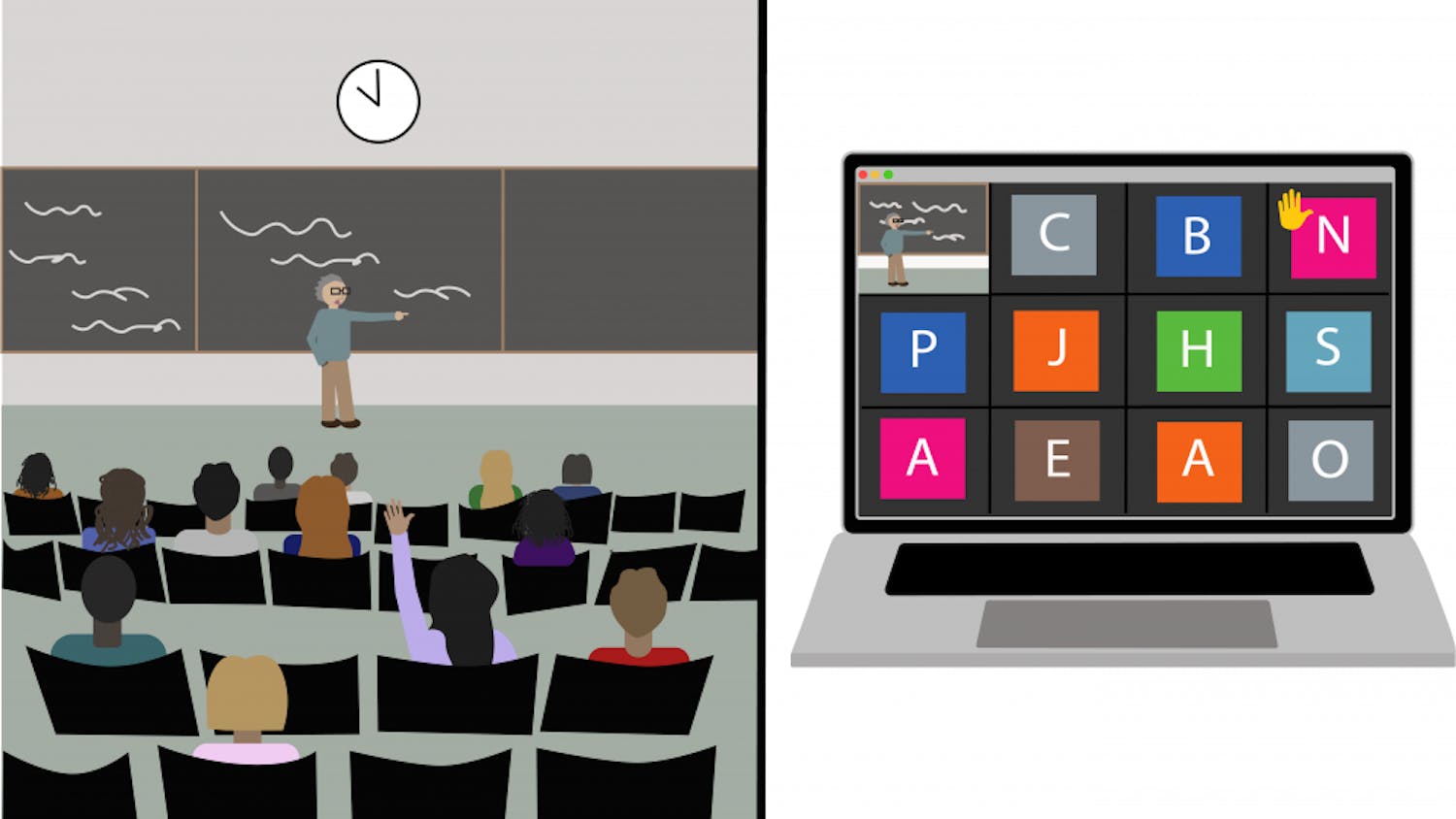In its 70-year history, student radio at Brown has had a number of firsts. In 1936, George Abraham '40 and David Borst '40 established the first college radio station in the country, the Brown Network, in part by stringing copper wires across campus. Then during World War II, at a time when few women worked in radio, female students filled on-air positions vacated by male students serving in combat. In the 1970s WBRU-FM became one of the first stations to broadcast rhythm and blues and soul music during the weekend program "360? Black Experience in Sound," according to Jason Sigal '07, general manager of Brown Student Radio.
"It was really ahead of its time," Sigal said of radio on campus.
These stories and others will be captured in a documentary that charts the history of Brown student radio. The 60-minute documentary, which is still in production and scheduled to air on BSR in February, has been compiled by a group of students involved in BSR and WBRU.
Sigal is one of documentary's three producers, working under executive producer Paul McCarthy '01.5, a BSR alum who has worked as a producer at WRNI, a local NPR station, Sigal said. McCarthy began work on the documentary two years ago, but Sigal and Rita Cidre '07, former general manager of WBRU, later signed on to help.
The documentary will tell the story of a student radio station that began in 1936 and split into two entities in 1966, when a part of WBRU broke off from the exclusively AM station to begin FM broadcasting. The FM station grew in popularity and became what is now WBRU. The AM channel recovered from a steady decline in popularity and became BSR when it switched to FM in 1997, according to the station's Web site.
The documentary will include excerpts of recorded interviews with listeners and Brown radio alums, Sigal said.
In addition to airing on BSR, the documentary will be available as a podcast on the BSR Web site and CDs of the program will be distributed to Providence libraries, Sigal said.
Associate Professor of American Civilization Susan Smulyan, who assisted the producers during their early research, said the documentary is both eye-opening and groundbreaking. "There has been very little scholarly research on college radio, and it turns out to be an interesting subject," Smulyan said.
The documentary began in earnest last fall when Sigal and several other students involved with Brown radio launched a Group Independent Study Project about the history of Brown radio and contacted Smulyan, who specializes in radio history, Smulyan said. Under her guidance, the group produced a number of essays and collected relevant documents that have formed the basis of the documentary. These items will soon be placed on a public Web site hosted by the Rockefeller Library, Smulyan added.
Some of the documents the students collected were pulled from the John Hay Library, but others were dug up from archives at WBRU and BSR, Smulyan said. Materials from the past 50 years had not been collected by the Hay and were "rescued from basements and old file cabinets," she said. Following their use, they will be donated to the Hay.
"It's a huge addition to the Brown archives. ... The Hay is really excited about this," Smulyan said.
Sigal said the students in the GISP always planned to turn their work into a documentary, and she hailed their dedication to exploring the history of the medium.
"They weren't doing (the work) for their professor, they were doing it because they'd learned something, and then they were going to explain it to someone else," Smulyan said.
Cidre said her work on the project was partly motivated by the chance to serve as a historian on a subject that had not been researched before.
"You spend four years reading history and reading books," Cidre said. "It's very rare that a student will get a chance to write history, and this project has allowed me and everyone involved in it to write a history of a station that has really impacted the development of radio in the United States."
The documentary has stirred up interest among sponsors at the University and beyond. The Rhode Island Council for the Humanities, a nonprofit that gives out more than $100,000 per year to projects that "inspire ... intellectual curiosity and imagination in all Rhode Islanders," donated $1,750 to the project.
Sue Ellen Kroll, who reviewed the proposal for the council, said the council members were excited about the commitment of the producers to extend the project "beyond the gates of Brown to reach a wide and diverse" Rhode Island public.
"The access potential for a digital project like this was very great, so we were very excited about that," Kroll said.
The documentary has also received funding from Brown organizations, including $1,000 from the Creative Arts Council, $500 from the Cogut Center for the Humanities and additional resources from BSR, according to Sigal.
The documentary will be supplemented with an exhibit at the John Hay Library titled "From Gas Pipes to Web Sites: Radio at Brown 1936-2006," based on the research the students performed, said Amanda Murray GS, a graduate student in the Public Humanities program and curator of the exhibit. It will also feature the stories of the students producing the documentary, including their reasons for getting involved in college radio and producing the documentary of its history.
"We're interested in why, at this moment, does their history become important (to them)?" Smulyan said.
The exhibit will also focus on the future of the medium, including possible collaborations between BSR and WBRU students, Murray said. It will run from Feb. 21 to March 9.
The premiere reception of the exhibit on Feb. 25 will be followed by the second of a series of panel discussions given by scholars and radio professionals as well as the general managers of BSR and WBRU, Smulyan said. The first panel will take place Feb. 5.
The exhibit and paanel discussion will be funded by The John Nicholas Brown Center for the Study of American Civilization, and the reception will be sponsored by WBRU.




